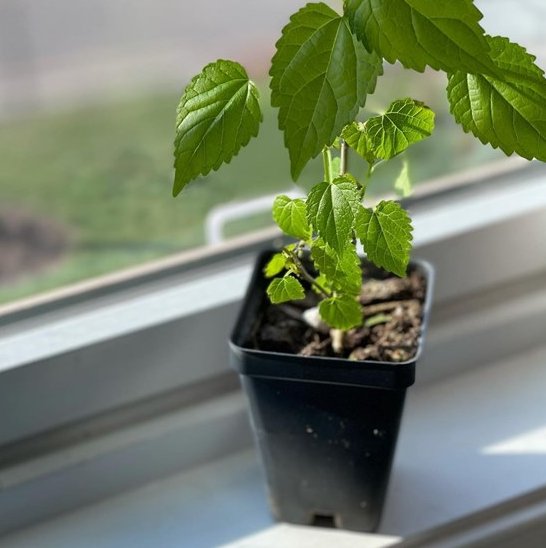How to Grow & Care for Mulberries in the Pot
Written by Maggie
Dec 06 2022
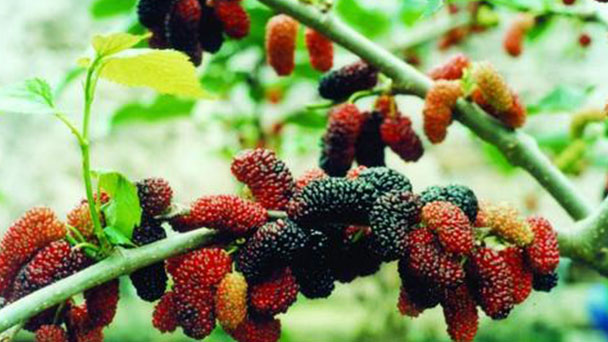
It’s a good idea to grow Mulberry Trees in your garden or yard. But what if you don’t have enough space or you live in a freezing cold climate? In that case, growing mulberry in pots is the one option you can try. And here’s all you need to learn to do this!
Mulberry is one of the fruits that are popular with the public. Not only the flesh is soft and moist, sweet and sour and delicious, but also its role in beauty and health care is not small. In addition to open cultivation, Mulberry can also be potted, so how to grow and care for mulberry in the pots? Let's look together.
Dwarf Mulberry Tree Facts
In USDA zones 5 to 10, mulberries grow well. The size of a mulberry tree grown in a container can be controlled to be between 2 and 6 feet (0.5 to 2 meters) in height. Mulberries naturally grow into large bushes.) tall) by pruning just after fruiting. A mulberry's pruning encourages the plant to start producing berries once more, leading to multiple crops throughout the growing season. Mulberries can be heterosexual, homosexual, or bisexual. You have a better chance of getting either a male or a female if you are starting from seed. Mulberries that are sold in stores either self-pollinate or are bisexual. An abundant crop of large, juicy berries, roughly the size of a large blackberry, quickly follows the plant's early spring bloom. This berry is so abundant that it even yields well in its first year and could produce multiple crops. The mulberry has more notoriety than just being the subject of the children's song "Pop Goes the Weasel." The silkworm's preferred food, mulberry foliage, has been grown for centuries just for this reason. Sericulture, also known as the breeding of silkworms for the production of raw silk, has been practiced in China for more than 5,000 years. Mulberry trees also have long, flexible branches that are excellent for weaving into baskets, fences, and screens. Despite all these fascinating applications, growing mulberries is primarily done for their fruit. The delicious berries can be used to make pies, jams, and frozen desserts in addition to being eaten fresh, dried, frozen, or cooked. They can also be used to make wine, or the juice can be dyed.
Mulberry Varieties
As was already stated, if you want to grow mulberries in a pot, you should pick dwarf varieties. Chaparral, Dwarf Everlasting, Mulberry Issai, and Weeping White Mulberry are excellent dwarf mulberry cultivars that do well in containers. These dwarf cultivars can be kept under control to a size of 2 to 6 feet by pruning after the mulberry fruits.
Growing Method of Potted Mulberry
Mulberry potted generally chooses to be planted in winter and early spring, the soil temperature had better be stable at about 10-12 ℃.
Before Mulberry pot planting, choose good quality, no diseases and insect pests of mulberry seedlings. Prepare a suitable size container, mulberry pot is best to choose a larger pot. Mulberry trees on the soil requirements are not high, with ordinary relatively loose breathable garden soil. When we grow and care for mulberry, it is best to add some coarse sand particles or cinder in the soil, conducive to water permeability, to prevent the effect of soil hardening. Before planting mulberry trees, you can add some decayed organic fertilizer to the bottom of the basin as a base fertilizer.
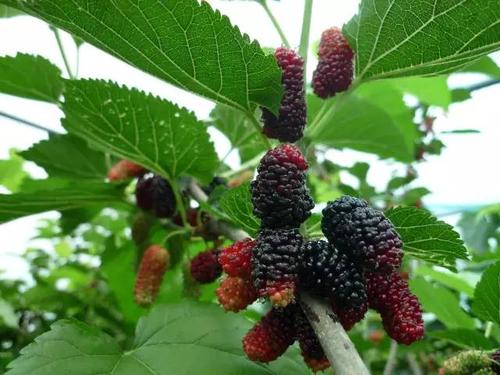
How to Grow the Mulberry in Pot
Choosing a Pot
In large pots, fruit trees and shrubs are frequently planted directly, which is incorrect because the plant will start to grow roots instead of concentrating on the growth above. START with small containers. For instance, select a standard 5-gallon pot that is 12 inches wide and deep or a slightly larger 7-gallon pot that is 14 inches wide and deep, and upgrade to a larger pot each time you notice the plant is becoming root-bound. Eventually, depending on the cultivar you're growing and the amount of space you have available, increase the pot size to 15-20–25 gallons.
Propagating Mulberry
The best ways to propagate mulberries are from cuttings (like I did) or through grafting. Since it will take years for the seedling to reach fruit-bearing stage, growing it from a seed is not advised. Additionally, there is a chance that the seed will grow into a male tree and remain fruitless for all time.
Choose a mature, healthy branch or stem and cut off the top to propagate from a cutting. Then, leaving a minimum of 15 inches of the cutting, cut the stem's bottom tip diagonally. Eliminate all of the mature, larger leaves. Put a drop of rooting hormone or solution on the cutting's bottom tip as an optional step. After that, firmly insert the cutting into a pot of soil and give it lots of water. Keep the pot in a protected area, away from rain and harsh sunlight. Always keep potting soil moist.
The cutting has taken root when new leaves start to emerge. gradually expose the pot to direct sunlight (for the first week, no more than two hours in the morning). You can move the cutting into a bigger pot after two months have passed.
Propagation from Seeds
- ripe mulberries should be soaked in water for 24 hours before being squashed to extract the seeds.
- Place the seeds on the paper towel and let them air dry completely.
- Place the dry seeds on wet filter paper and put them in a Ziploc bag.
- Refrigerate the Ziploc for at least 90 days to stratify the contents.
- The seeds should be sown in a potting mixture with good drainage, just below the surface, and placed in a bright area.
Seedlings should be transplanted into separate pots after germination, which takes between two and six weeks.
Propagation from Cutting
- Take softwood cuttings that are 4-6 inches in length above the node using a clean, sharp instrument.
- Leaf out the bottom half of the cutting.
- Plant a cutting in the container a few inches deep after dipping the rooting end in rooting hormone.
- To produce a greenhouse-like effect, cover the cuttings with a clear plastic sheet or bag.
- Place the cuttings in a location that receives plenty of indirect light; check on them once a week, and mist the potting medium if it seems dry.
The mulberry plant can be moved into a new pot once the cuttings have rooted, which will take 4-6 weeks.
Requirements for Growing a Mulberry Tree in a Pot
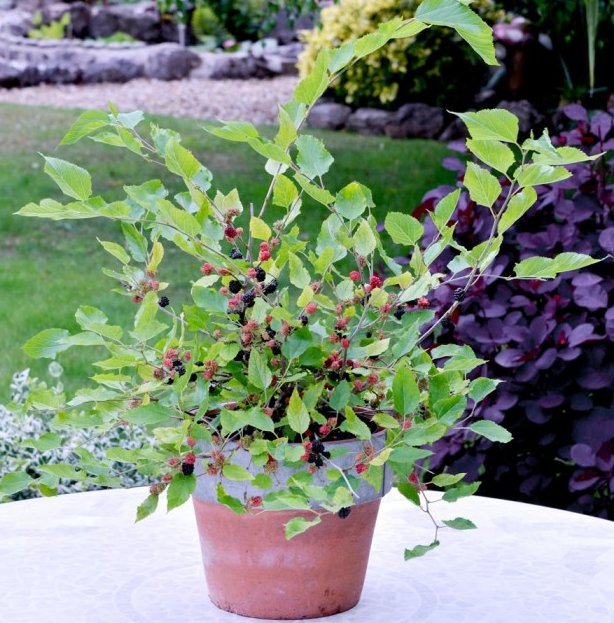
Climate
Across all continents, mulberry trees can be found. It can be grown in temperate areas, subtropical areas, and arid tropical areas. You can try growing a mulberry tree in USDA zones 3 and 4 with caution in the winter. It is possible to grow it in USDA zones 5–10, as well as in Zone 11 with some difficulty. *Expect your mulberry tree to lose its leaves in the winter if it is grown in a cold climate; however, new growth starts as soon as the weather warms up after the winter.
Position
Like all other fruit trees, mulberry trees need lots of sunlight to develop and bear fruit. Decide where you will be and make sure it has good airflow and receives sun all day. If you live in a warm tropical or subtropical climate, place the mulberry tree growing in the pot in a spot that receives shade in the afternoon in SUMMER.
Soil
Use potting soil that is rich, loamy, well-drained, and either pH neutral or slightly acidic. The mulberry tree prefers fertile soil that contains plenty of compost or manure. Please remember to include this as well. Proper drainage is required for mulberry trees grown in containers to be successful. You shouldn't use soil that prevents water from draining. Therefore, it's a good idea to use a SOILLESS potting mix.
Watering
For a few months while your plant is establishing, deep, frequent watering is imperative. Make sure the soil is not still wet. When the mulberry tree in the container has a chance to take root, water it sparingly. To check on it, stick your finger in the top inch of soil. If growing in cooler zones, reduce watering during the winter.
*Keep the soil slightly moist and water frequently, especially in the summer, in USDA zones 10 and 11, or in any tropical area.
Mulberry Plant Maintenance
Mulberry trees are grown in silk farms for their leaves, which are the silk worms' preferred food. The berries actually have a sweet flavor and are packed with vital antioxidants that may help prevent many diseases, including cancer, diabetes, and arthritis.
The mulberry can be trained to grow as a large bush rather than a 30-foot tree by performing routine pruning. Start with a 5-gallon container when re-potting; if more space is required, you can upgrade to a larger container after 2–3 years. Put the container somewhere that receives six to eight hours of daily direct sunlight. When the soil feels dry, only water deeply.
Following each harvest round, the tree or shrub will enter a dormant stage. So, prune the mulberry branches to encourage the plant to produce more branches in order to continue harvesting. Within a week, new growths will begin to emerge, and on these new growths will eventually develop tiny berries. To encourage quicker growth of new branches and fruits, condition the soil regularly with organic fertilizer. As soon as the berries turn dark red or black, harvest them.
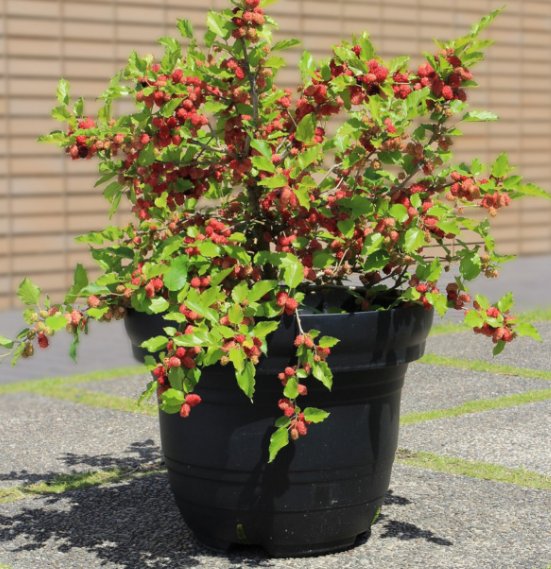
Fertilizer
moderately when applying fertilizer! Spread balanced granular fertilizer over the soil at the beginning of the growing season, or feed the plant balanced liquid fertilizer at regular intervals of 7 to 10 days. Alternatively, you could cover the top of the pot with a layer of well-rotted manure or compost. A good way to guarantee optimum growth is to feed compost tea on a regular basis.
Pruning
In general, pruning mulberry trees in containers is less important than when they are planted in the ground. The best time to schedule pruning is during the tree's dormant (winter) period, when it is not actively growing. After the fruiting season has passed, you can prune as well. Sometimes, or whenever necessary, dead, damaged, diseased, and crossing branches can be lightly pruned and trimmed away. In tropical regions, pruning is completed right before the start of the rainy season, after the end of the summer.
Mulching and Covering
You don't need to worry too much about the freezing temperatures in the winter when growing a mulberry tree in a pot. To protect the roots, mulching the soil's top layer is essential below USDA Zone 7. If you're keeping your pots in an exposed spot, cover them with bubble wrap.
A mulberry tree growing in a warm climate would benefit from a top layer of mulch because mulch resists heat in the summer.
Mulberry Care for Diseases & Pests Control
Potted mulberry plants may be at risk of mold, leaf spot and root rot. In general, root rot can be avoided by ensuring proper drainage and avoiding excessive watering. When we grow and care for mulberry, don't be alarmed if you encounter an infestation like thrips, white flies or leaf mites, because it's easy to kill them with insecticides because of the small size of the pot plant.
Potted mulberries, if well cared for, will also produce delicious mulberry fruit, so when planting mulberries, the public can master its planting skills, to achieve appreciation and use of double functions.
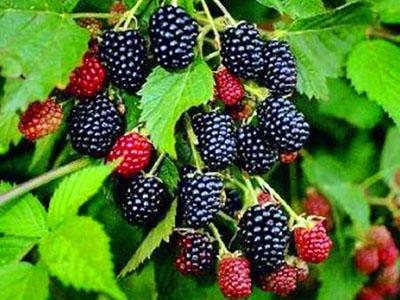
Conclusion: Growing Potted Mulberry Care
It is suitable to place mulberry potted plants on the outdoor balcony and other ventilated and breathable lighting places; Keep the soil moderately moist, and dry soil in time to drench water when it rains in time to drain; Loosening soil and weeding can be beneficial to mulberry root growth. Fertilization adheres to eating more until mulberry seedlings germinate leaves, you can apply 1 feces or urea water fertilizer. When we grow and care for mulberry, according to the specific growth situation, it can be appropriate 1-2 times after fertilization.
FAQs About Mulberry Tree
How to Keep a Mulberry Tree Small
The size of a mulberry tree grown in a container can be controlled to be between 2 and 6 feet (0.5 to 2 meters) in height. Mulberries naturally grow into large bushes.) tall) by pruning just after fruiting. Mulberry plants respond favorably to pruning by starting to produce berries once more, which produces multiple crops all through the growing season.
How to Make a Mulberry Tree Produce Fruit
Temperature and humidity levels can have an impact on the tree, and if the roots get too dry, the fruit may fall before it has had a chance to fully ripen. The RHS advises watering the tree through the season, from blossom to harvest, to ensure a good yield of fruit.
How Fast Do Mulberry Trees Grow
Mulberry trees are rated as fast-growing, capable of developing 10 to 12 feet during a six-year period. At maturity, red and white mulberry trees both reach heights of 70 feet, while the former can reach heights of 80 feet.
Latest Updated
- Benefits of Bugleweed - 7 Science-backed Health Benefits
- Bugleweed Dangers & Side Effects - Is It Poisonous?
- How to Plant Evergreen Trees - What You Should Know
- When to Plant Evergreens - Grow Guide for Evergreen Trees
- 12 Wonderful Evergreen Shrubs for Your Garden
- 12 Popular Evergreen Plants with Pictures for Beginners
- When And How To Prune A Lilac Bush Like a Pro
- How to Grow & Care for Lilac Vine (Hardenbergia Violacea)
- Japanese Lilac Tree (Syringa Reticulata) Care & Propagation Guide
- Shumard Oak Pros and Cons - What to Know
Popular Articles
- Winter maintenance of Antirrhinum Majus
- How to Grow Terminalia Mantaly Tree
- How to Grow and Care for Crossostephium Chinense
- How to grow Antirrhinum Majus in spring
- Peristeria Elata (Dove Orchid) Profile: Info & Care Guide
- Underwatered Snake Plant (Sansevieria Trifasciata) - Signs And How To Fix
- How to Care for Brazilian Jasmine Plant (Mandevilla Sanderi)
- How to Grow & Care for Graptopetalum Purple Delight in Summer
- Rosa Chinensis (China Rose): Plant Growing & Care Tips
- How to Care for Baby Sun Rose (Aptenia Cordifolia)
